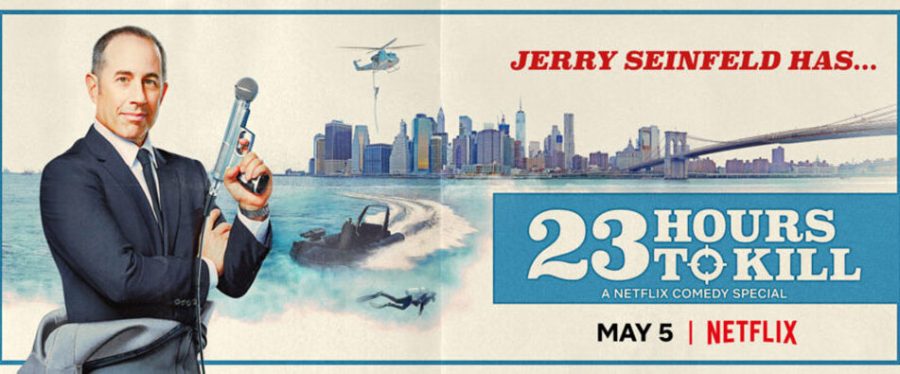Seinfeld stand-up fails to compete with comedy of classic ‘Seinfeld’
You may also enjoy...
Source: Netflix
There’s TV that makes you laugh so hard you cry, and then there’s TV that makes you smile to yourself and let out a laugh every once in a while.
While Jerry Seinfeld’s ’90s sitcom “Seinfeld” was undoubtedly the former, his Netflix stand-up special “23 Hours to Kill” released May 5 is the latter. The largest appeal of the special is the excitement of watching an iconic comedian perform new material.
Mr. Seinfeld has always had an incredibly distinctive voice and presence. With his trademark voice cracks and a light-hearted criticism of the world, Mr. Seinfeld is exactly as he was on “Seinfeld” 20 years ago. His stage presence is the special’s greatest appeal — not the content, but the thrill and nostalgia of watching an iconic comedian on stage.

Mr. Seinfeld divides his hour-long special into two halves — the first, an analysis of the world and the second, an analysis of “Jerry’s little world.” He spends the first half contemplating human annoyance with the world. His jokes are funny because they provide a depressingly astute analysis of minor frustration with everyday life.
He says, “Never feel bad that your life sucks. The greatest lesson you can learn in life: ‘Sucks’ and ‘great’ are pretty close.”
Cue laughter. Not tear-triggering, roll-on-the-floor laughter, but a light chuckle to deflect the depressing conclusion he came to. Mr. Seinfeld’s stand-up is the kind that leaves you reflective rather than eager to tell your friend the joke you heard.
Mr. Seinfeld’s stand-up is the kind that leaves you reflective rather than eager to tell your friend the joke you heard.
This is the quintessential difference between the jokes of the “Seinfeld” series and “23 Hours to Kill.” In “Seinfeld,” Mr. Seinfeld shared personal experiences, leaving out deep, profound analysis of the human condition. “23 Hours to Kill” highlights the latter. Both are funny, but “Seinfeld” sets a high bar for comedy that “23 Hours to Kill” does not meet.
Through the second half of “23 Hours to Kill,” Mr. Seinfeld dives into “Jerry’s little world” and talks about his personal life as a 65-year-old married man. He analyzes the difference between married people and single people. As a single man, he found the lives of married people to be “pathetic and depressing.” Now, as a married man, he finds the lives of single people to be “meaningless and trivial experiences.” Mr. Seinfeld argues that both conclusions are correct, but, fundamentally, people on either side of marriage cannot understand each other.
The joke parallels the difference between “Seinfeld,” his work as a single man, and “23 Hours to Kill,” his work as a married man. In each, Mr. Seinfeld attempted to share relatable experiences with his audience. In “23 Hours to Kill,” with its largely millennial audience, this occasionally left his jokes less than impactful, as he had different life experiences than his audience.
Despite this difference, “23 Hours to Kill” is still a solid hour of entertaining material with bits about Pop-Tarts, texting and the struggles of raising children. And as far as the thin line between “sucks” and “great,” the special is easily on the “great” side.
















